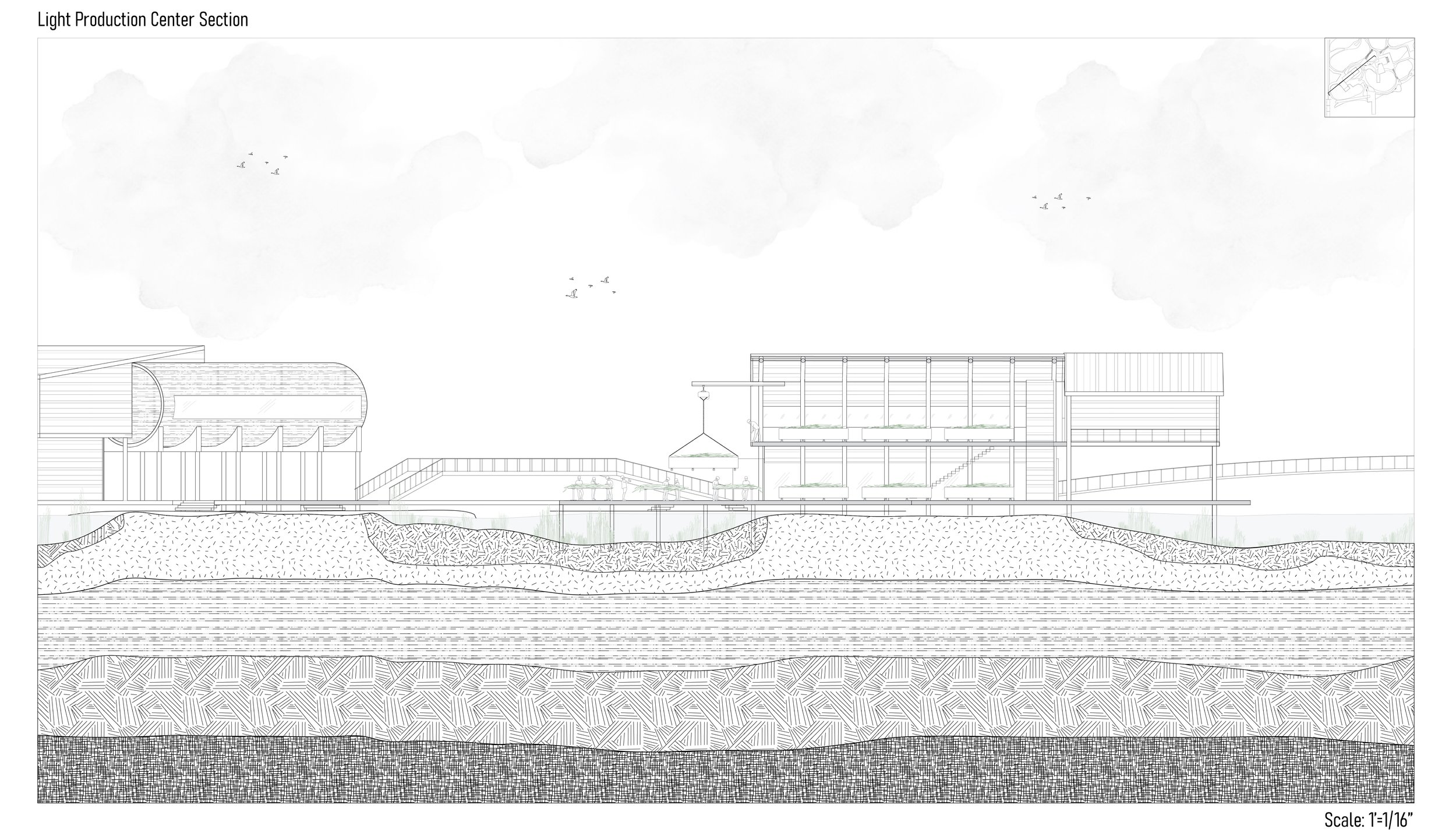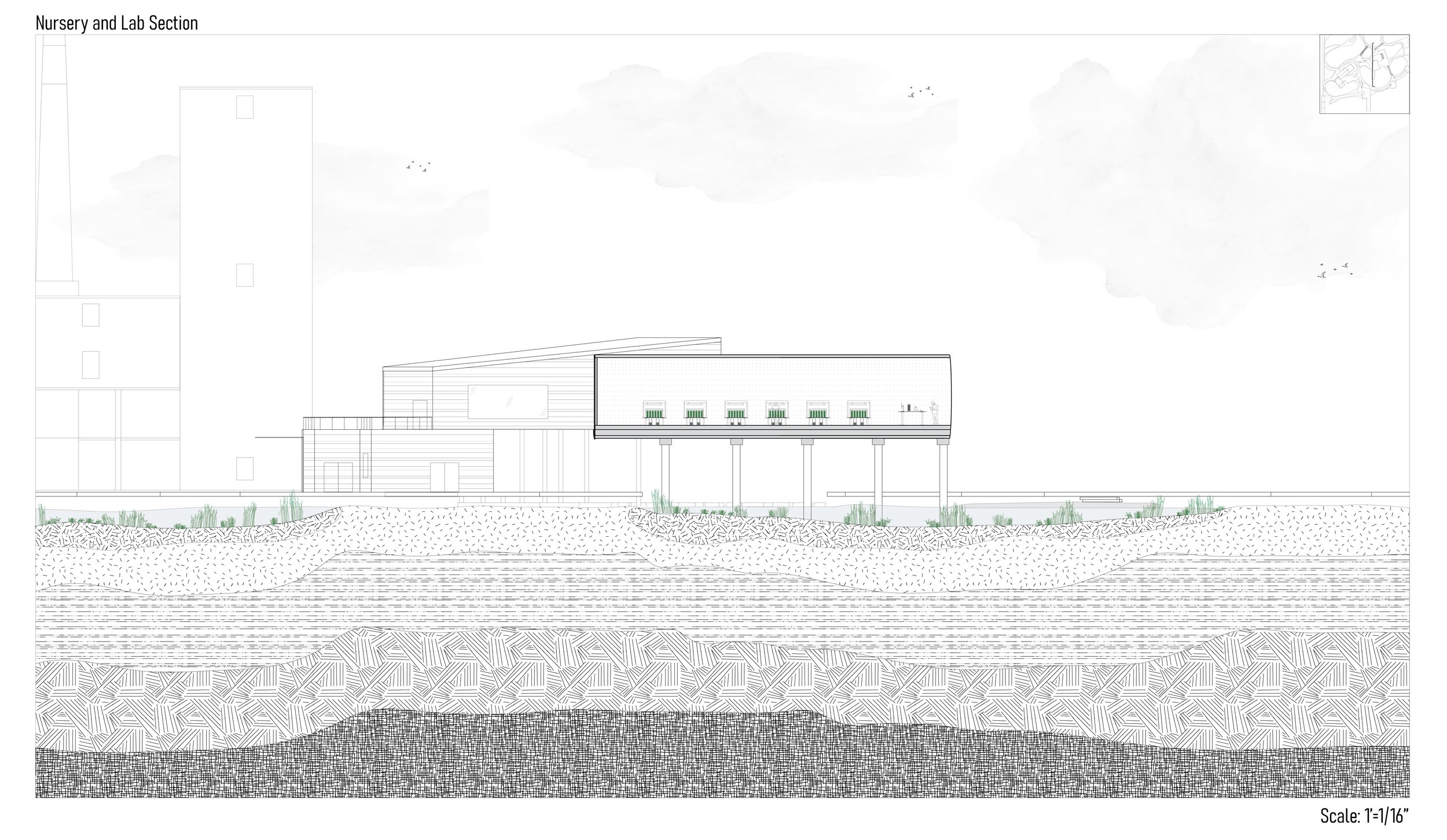
Resilient Remediation
Industrial, Cultural, and Environmental Remediation in the Anthropocene.
David Maria d’Olimpio and Stan Walden
Parsons School of Design M.Arch Year 2
Resilient Remediation addresses the remediation of the Gowanus Bay and Canal through the design of an abandoned lot in Red Hook’s industrially zoned waterfront.
The project incorporates a holistic approach to environmental remediation through the design of a seaweed farm and production center within a reconstructed, publicly accessible, wetland.
The design provides Red Hook’s residents work opportunities and locally produced goods that actively improve surrounding water quality through phytoremediation, all while repairing the neighborhood’s fraught relationship with their waterfront.
Though many Red Hook residents live a mere 1000 feet from the water, most access to their waterfront is filtered through hostile, industrially zoned landscapes of production. These industrially zoned waterfronts contribute heavily to the pollution of the local bodies of water, limiting resident’s interaction with their waterfronts to rising coastal hazard zones and hurricane surges.
Green City proposes a holistic solution to Red Hook’s polluted waterways through seaweed phytoremediation. Farms located on currently vacant docks surrounding the Gowanus Bay can absorb heavy metals and pollutants, while viable biomass collected from harvests is used to manufacture products for the local community. The proposed constructed wetlands would allow flood surges to be absorbed as well as restore public access to the water through an ecologically rich and educational public park.
The overall plan of the site and seaweed farm demonstrate the three buildings proposed. From Left to right, the Dryhouse, Production Center, and Event Center/Seaweed Nursery are visible. Dashed lines represent maintenance vessel routes through the 250’ long kelp lines.
Tidal Wetlands occupy what was once a parking lot, providing homes for flora and fauna as well as a public outdoor space for Red Hook residents to learn about wetland ecosystems.
On the ground floor, the seaweed production center’s workspace is observable from the open wetland park. The event center east of the production center educates the public on the farm, surrounding ecosystem, and seaweed products produced locally.
Seaweed is stored on the second floor of the production center, flanked by office space and break rooms for the workers. The event center’s roof provides a public, elevated viewpoint as well as flood-safe seaweed nursery and seaweed fabric production space.
Collaboration with the RETI Center on site led to full Seaweed material prototyping featured in my second year SEAPANEL project

Light Production Center in Section: Seaweed Bundles are lifted to the second floor for storage, safely above flood surge height

Seaweed Dryhouse and Production Center: Once the seaweed is harvested, it is dramatically hung to dry for the community to see.

The farm's Seaweed Nursery: housed in a reused concrete silo from the neighboring building







